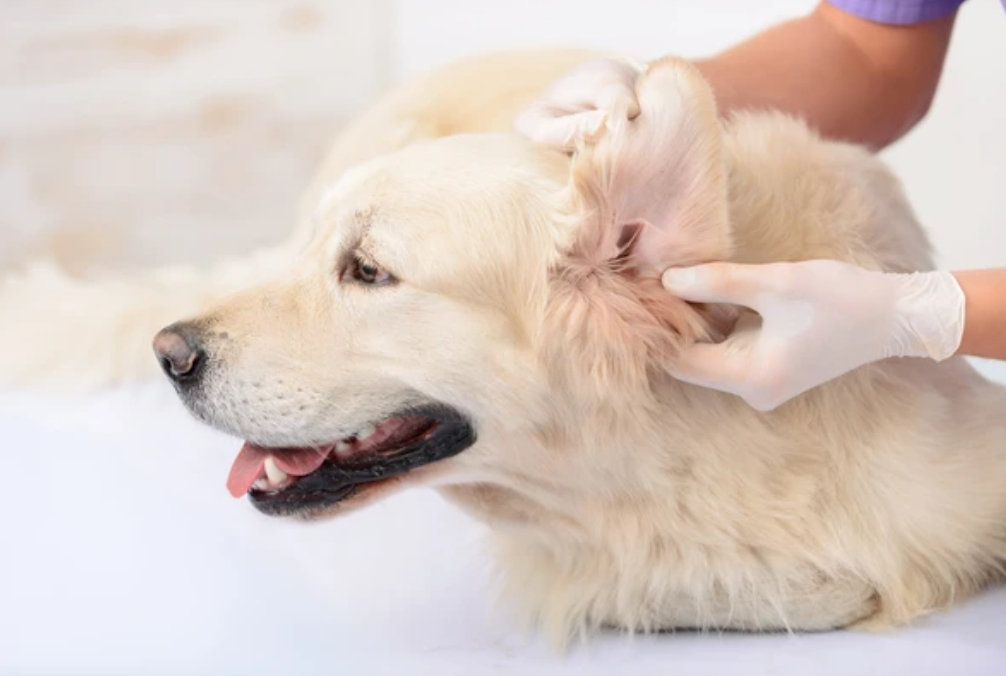Dog owners often find themselves concerned when noticing unusual substances in their pets’ ears, such as black ear wax in dogs. While it’s common for dogs to produce some ear wax, changes in color, texture, or smell can be a sign of underlying health issues. Understanding the possible causes and knowing when to seek treatment can make a significant difference in your dog’s well-being.
What Is Ear Wax in Dogs?
Dog ear wax is a normal part of maintaining ear health, helping to trap debris and protect the ear canal from infection. However, excessive ear wax buildup or wax of an unusual color—such as black ear wax—can indicate a problem.
Normal dog ear wax typically ranges from yellow or light brown. Any dark brown or black ear wax could suggest an ear infection or the presence of ear mites.
Common Causes of Black Ear Wax in Dogs
- 1. Ear Infection:
One of the most frequent reasons for black ear wax is an ear infection. Infections can cause inflammation and result in dark brown or black discharge, along with a foul odor. Dogs that are prone to ear infections may experience this more often.
-
Ear Mites:
Ear mites are tiny parasites that infest the ear canal, causing irritation and excessive wax production. Ear mite infestation often leads to black ear wax and itching. You may notice your dog frequently scratching at their ears.
-
Overproduction of Ear Wax:
Some dogs simply produce more ear wax than others, which can lead to a black wax buildup. While this isn’t always a sign of infection, it’s essential to clean the ears regularly to prevent complications.
- Brown Discharge Dog Ear Infection:
A brown discharge in the ears can also signal an infection. Ear infections in dogs can cause a range of discharge colors, from light brown to black, depending on the severity.
Symptoms of Dog Ear Infection or Mites
- Ear discharge that’s dark or reddish-brown.
- A dog may shake its head frequently due to discomfort.
- A foul odor coming from the dog’s ear canal.
- Red, inflamed, or swollen ears.
- Persistent scratching at the ears.
If you notice any of these symptoms, it’s vital to consult your vet. A dog ear infection can escalate if left untreated and may lead to more severe health issues.
Diagnosing and Treating Dog Ear Wax Buildup
To diagnose the cause of black ear wax or brown ear wax, your vet will examine the dog’s ear canal using specialized instruments. They may also take a sample of the wax to check for ear mites or bacterial infections.
Once the cause is identified, treatment may include:
- Ear Drops: Medicated ear drops are commonly used to treat both ear infections and ear mite infestations. The ear drops help eliminate the infection or mites, and they can also reduce inflammation.
- Cleaning the Ears: Keeping your dog’s ears clean is essential for preventing ear problems. Use a vet-approved ear cleaner to gently remove excess wax and debris. Be cautious not to insert anything deep into the ear canal, as this can cause injury.
- Ear Mite Treatment: Ear mites can also cause significant irritation and lead to black ear wax. Your vet will recommend treatment options such as ear mite medications that kill the parasites and relieve your dog’s discomfort.
The Role of a Dog Earwax Color Chart
Understanding the significance of different ear wax colors can help you detect potential issues early. A dog earwax color chart can indicate normal versus abnormal wax. For example:
- Yellow or light brown wax is generally normal.
- Dark brown wax may indicate the presence of dirt or minor infections.
- Black ear wax often suggests an active infection or mite infestation.
Using a dog earwax color chart can help dog owners determine if their pet needs veterinary attention.
How to Maintain Your Dog’s Ear Health
Maintaining proper ear health is crucial in preventing chronic ear infections. Here are some ways to keep your dog’s ears in good shape:
- Regular Ear Cleaning: Clean your dog’s ears weekly, especially if they are prone to ear infections. Regular cleaning can prevent the overproduction of ear wax and reduce the likelihood of infection.
- Monitoring Ear Wax Color: Keep an eye on the color of your dog’s ear wax. If you notice any significant changes, such as black ear wax or unusual odors, contact your vet immediately.
- Using Approved Products: Ensure you’re using a vet-recommended ear cleaner that is safe for dogs. Avoid harsh chemicals or human products that could irritate the inner ear.
When to Visit the Vet
If your dog exhibits signs of ear infection, such as excessive scratching, dark or smelly ear wax, or head shaking, it’s essential to seek veterinary care. A proper diagnosis and treatment plan can help resolve the issue and prevent it from becoming chronic.
In cases of severe infections or damage to the ear canal, more advanced procedures like total ear canal ablation may be necessary. This surgery involves removing the external ear canal to treat chronic ear infections that do not respond to other treatments.
Conclusion
Taking care of your dog’s ears is a key part of ensuring their overall health. Recognizing the signs of ear infections or ear mite infestations can help you get timely treatment and prevent long-term damage. Regular cleaning and monitoring of ear wax will help maintain your dog’s ear health and keep them comfortable.
If your dog develops black ear wax or shows signs of infection, don’t hesitate to consult your veterinarian. A little care and attention can go a long way in keeping your furry friend healthy and happy.


